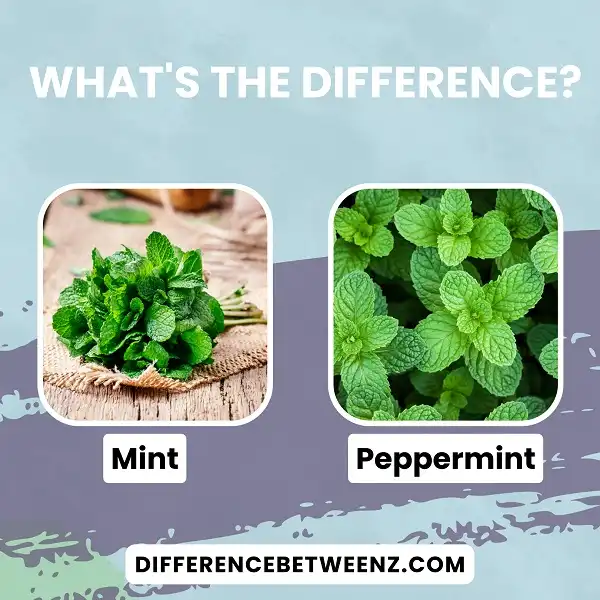Mint and peppermint are two popular herbs that often get confused for each other. They both have refreshing flavors and health benefits, but there are some key differences between them. In this post, we’ll explore what makes mint and peppermint unique plants, and discuss the various ways you can use them in your culinary creations. Stay tuned for some delicious recipes at the end!
What is Mint?
Mint is a popular herb that is used in many dishes and beverages. Mint is part of the Lamiaceae family, which includes other herbs such as basil, oregano, and rosemary. Mint is a perennial plant that can grow up to three feet tall. Mint has many small, oval-shaped leaves that are green in color. Mint leaves have a refreshing, minty smell and taste. Mint is used fresh, dried, or powdered. Mint can be used to flavor meats, sauces, soups, salads, desserts, and drinks. Mint is also used to make teas and essential oils.
What is Peppermint?
Peppermint (Mentha × Piperita, also known as Mentha balsamea Willd) is a hybrid mint, a cross between watermint and spearmint. Indigenous to Europe and the Middle East, the plant is now widely distributed around the world.
- Peppermint typically occurs in moist habitats, including wetlands and streamsides. The fresh leaves have a strong, clean minty aroma with a warm, sweet flavor. Peppermint is used in flavoring food and beverages as well as for health reasons.
- Peppermint oil has been traditionally used for thousands of years for its medicinal properties. Peppermint can aid in digestion, relieve nausea, settle an upset stomach and soothe gas pains.
- Peppermint can also be helpful in clearing sinuses and relieving headaches by lowering blood pressure and reducing muscle tension. Peppermint oil is also known to repel some insects like mice, ants, and cockroaches.
- Today, peppermint is widely used in toothpaste, chewing gum, candy, and beauty products. It is also an ingredient in some shampoos, soaps, and lotions.
Peppermint leaf tea has a high concentration of antioxidants which can help boost the immune system. Peppermint essential oil can be diffused to clear congestion, increase alertness and improve focus.
Difference between Mint and Peppermint
- Mint and peppermint are two very popular herbs that are often used in cooking and baking. They both have a strong, fresh flavor that can add a real kick to dishes. However, there are also some key differences between these two herbs.
- Mint is a member of the Lamiaceae family, which includes other herbs such as rosemary, sage, and thyme. Peppermint, on the other hand, is a hybrid of water mint and spearmint. Mint is also more versatile than peppermint and can be used in both sweet and savory dishes.
- Peppermint, on the other hand, is generally only used in sweet dishes or desserts. Mint also has a slightly sweeter flavor than peppermint. So, if you’re looking for an herb to add a little flavor to your dish, mint is a good choice. But if you’re looking for something to give your dish a real Minty-kick, then peppermint is the herb for you!
Conclusion
The menthol in peppermint is more intense than the menthol in mint. This is because there are different types of menthol molecules. Peppermint oil has a higher concentration of methyl chavicol, which is responsible for the cooling sensation. Mint oil has a higher concentration of limonene, which gives it a refreshing taste. When it comes to medicinal purposes, peppermint is often preferred over mint because it can help with nausea and vomiting. However, both oils have anti-inflammatory and analgesic properties.


